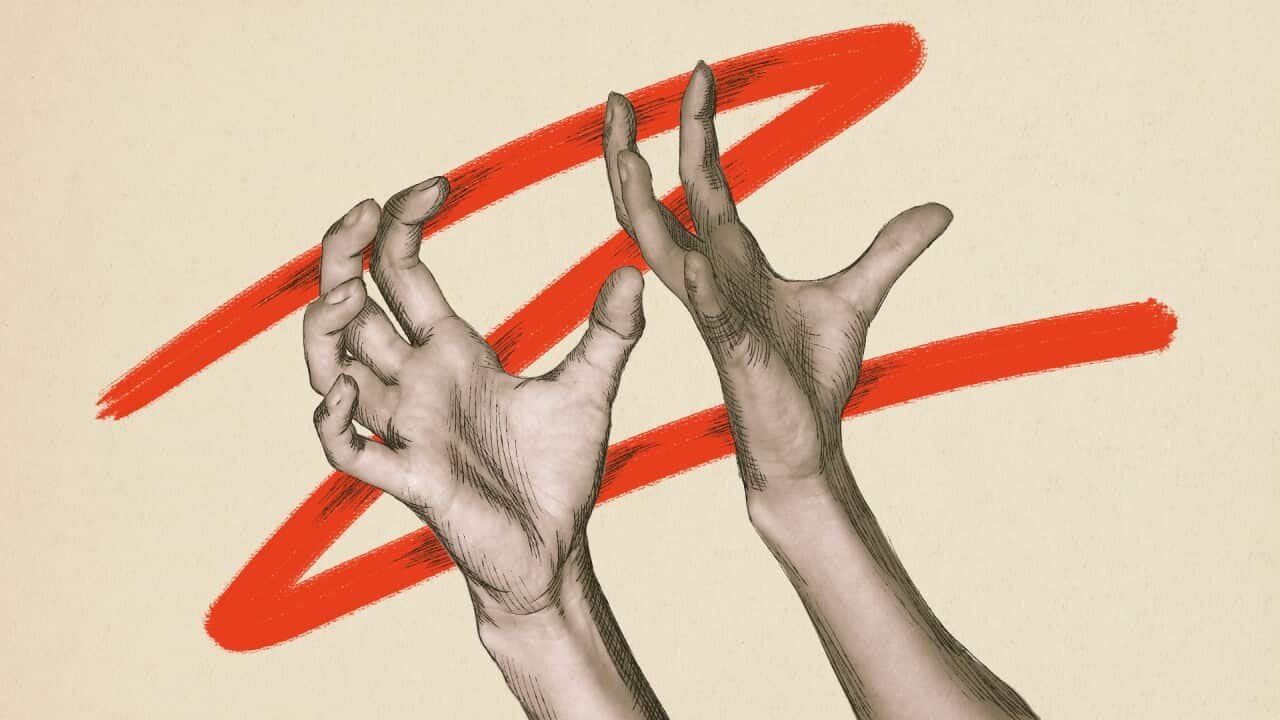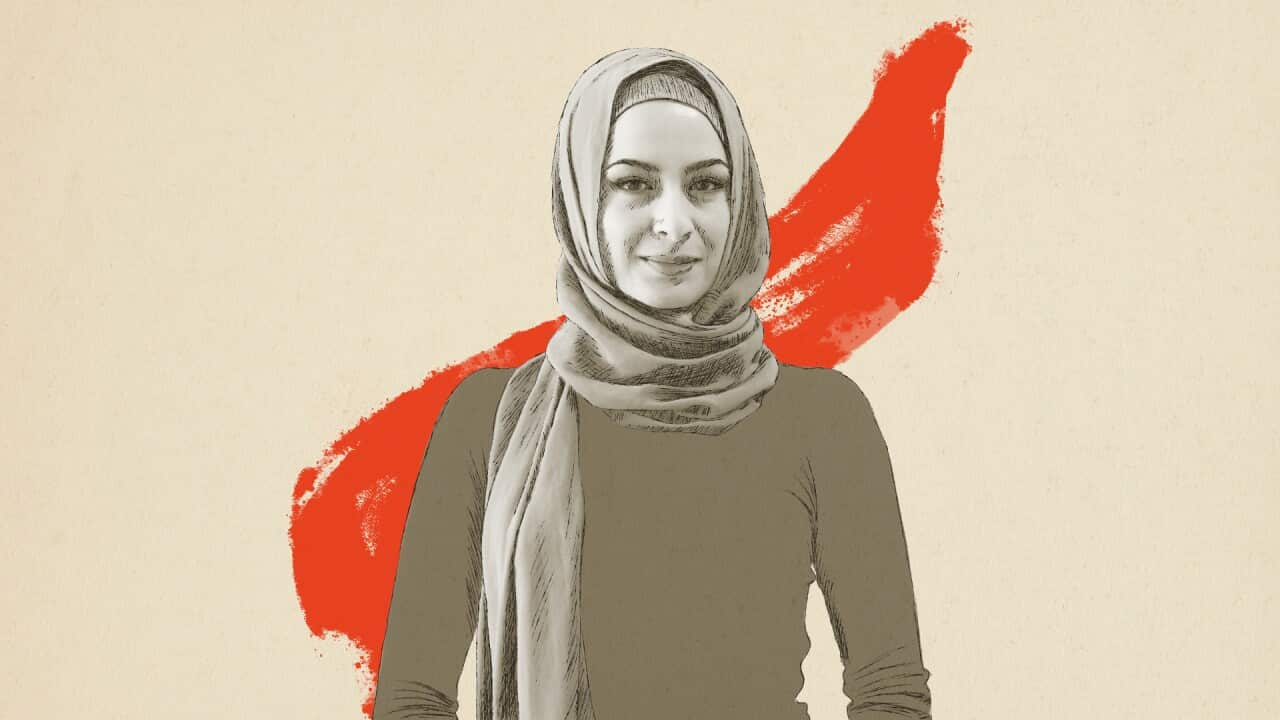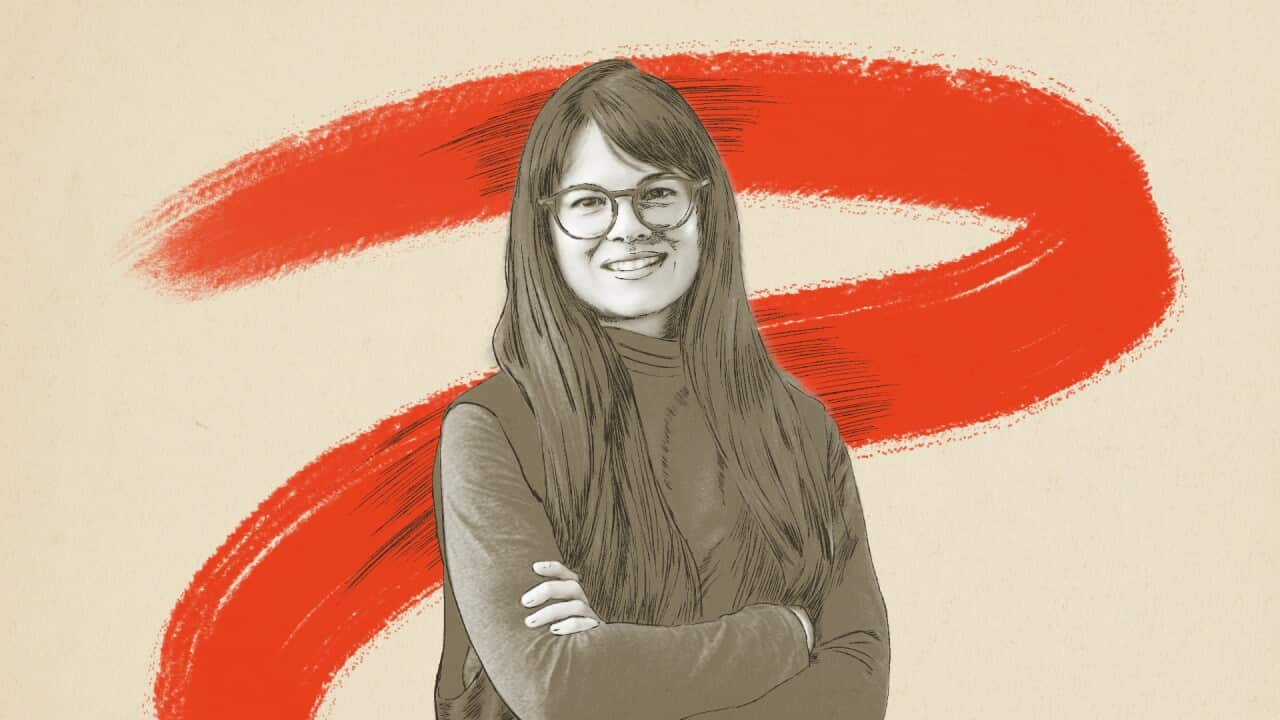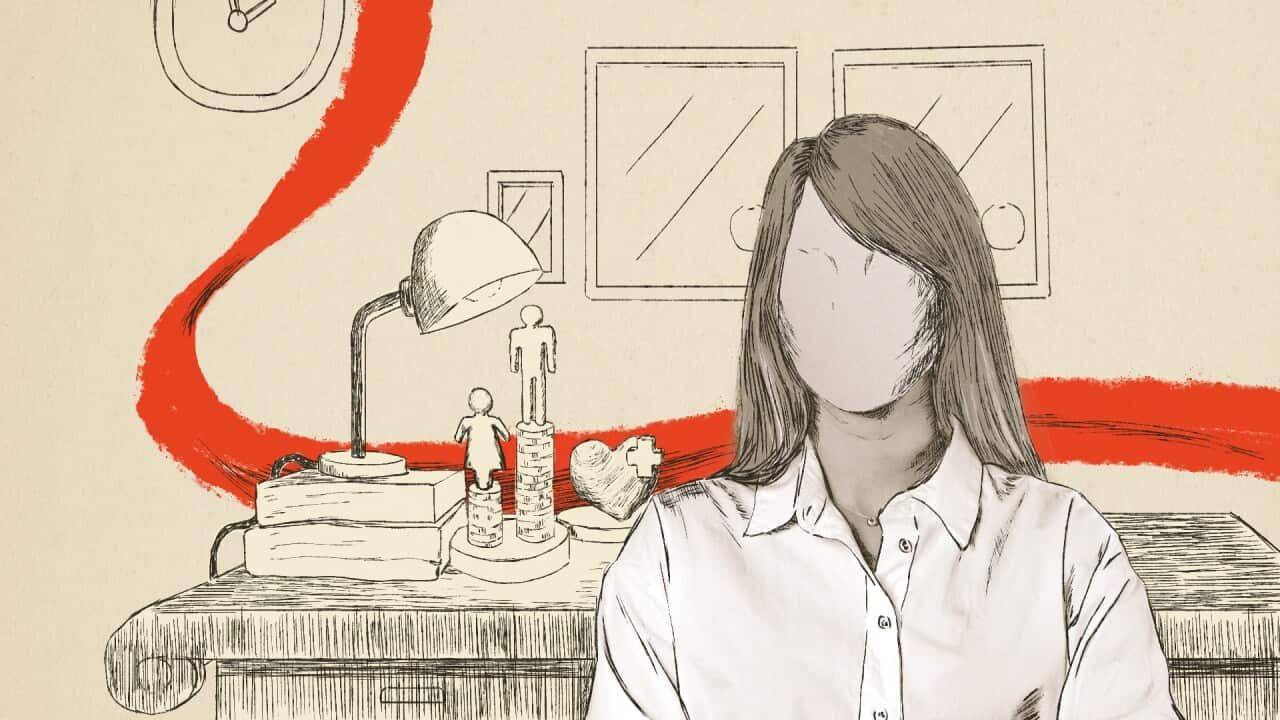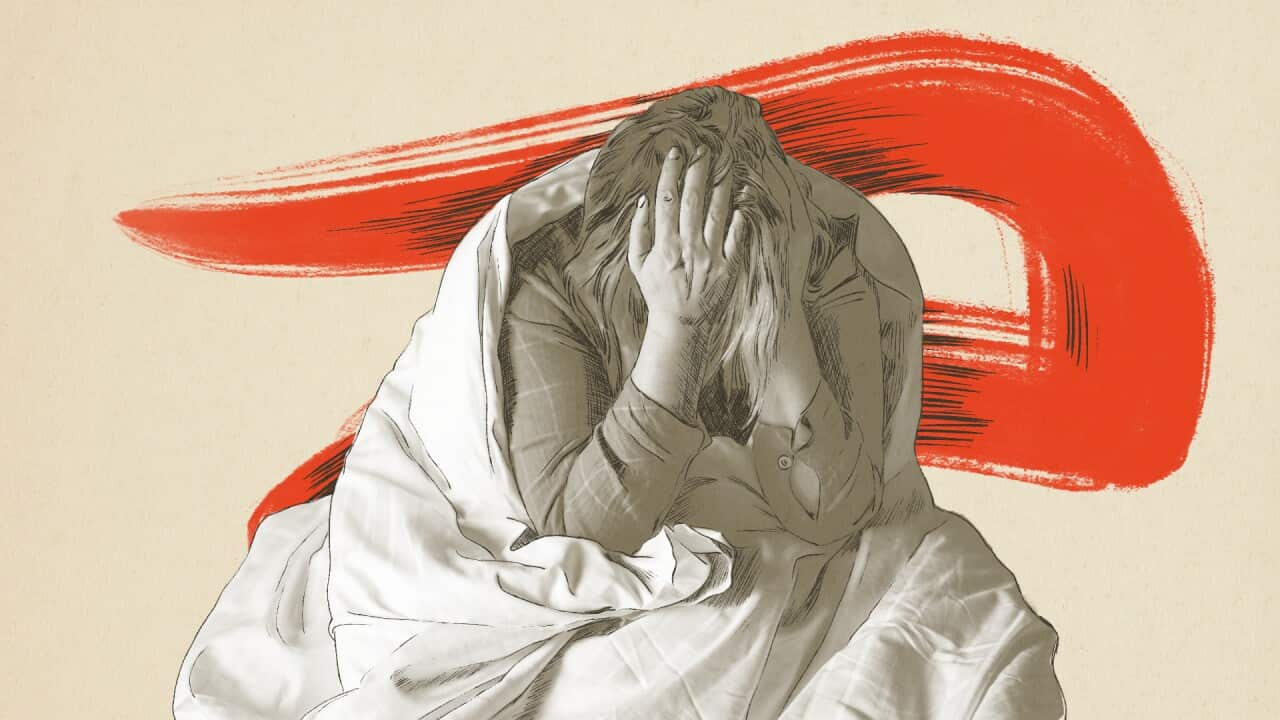TRANSCRIPT
'Hysterical', 'slut', 'drama queen'.
They're just some of the labels attributed to women currently seeking healthcare in Australia.
“Consistent themes included feeling dismissed or disbelieved, being stereotyped as hysterical, a drama queen, or even shockingly as a slut.”
That's Assistant Minister for Health Ged Kearney speaking at the National Women's Health Summit in March.
The federal government's End Gender Bias survey, to which more than 2,500 women responded, found that two thirds of women experience gender bias in our health system.
“Again and again, women's symptoms were quickly attributed to other causes, such as menstruation, lifestyle factors, or even an assumption that women were faking it.”
This comes as a Victorian inquiry into women's pain follows a 2023 survey finding women generally experience more recurrent, severe and longer lasting pain than men.
Yet, at nearly every level of healthcare, research suggests girls' and women's claims of pain are often viewed as atypical, exaggerated and even completely fabricated, while men's health claims are treated as the default.
In this episode of 'Hysterical'... we explore how government inquiries are looking to address unequal health outcomes for women... and who might be excluded from these conversations.
Patricia, not her real name, has confronted numerous barriers in her long journey dating back to pre-puberty, battling menstrual and pelvic-related pain, as well as reproductive issues.
“At that time, the gynaecologist I was referred to, he was quite an older gentleman. And he actually said, 'well when do you want to have babies?' And I was like 19 and I was kind of going like well that's not... Everything, It was less about symptom management and it was all more about preserving fertility you know."
It started as a 15-year-old with ovulation pains, as well as painful periods, before polycystic features were identified in her ovaries.
Patricia went on the pill but says it definitely didn't solve the issue, with ongoing intense pain both during and outside of her menstruation, before undergoing ovarian drilling when she was 19 years old.
She says it felt like pain management wasn't the priority of health practitioners.
“So anyway he had sort of said we can do this procedure called ovarian drilling, and what we do is we use like a laser and essentially poke a whole pile of holes in that polycystic ovary, which will kind of reduce the size and it can preserve fertility for later, and it should give you some symptom control. So it was like the comfort was secondary to the baby factory.”
While Patricia's health was stable for a while, the pain started to increase again when she was around 24 years old.
She says she felt very comfortable with her female gynaecologist at the time, who seemed to prioritise pain management.
The exploratory laparoscopy her specialist performed also involved reducing some of the thickness in the lining of Patricia's uterus, which she says helped minimise her period pains temporarily and also likely meant she didn't have to use I-V-F to have her children, despite confronting two miscarriages alongside her healthy pregnancies.
Following the birth of her first child, Patricia experienced severe pain once again.
And with that came a similar sense of dismissal, even causing her to question her own experiences.
“And I found the sonographer there very dismissive, very challenging. She was like 'nah everything looks fine, your ovaries aren't even that bad'. You know, I just grinned and bared it, and then it just got worse and worse and then stopping breastfeeding changed it again. And you know I work full time, I study full time, and I have young kids, so a lot of the time I'm like, 'it must be stress'. So you just gaslight yourself a bit.”
The insights prompting the Victorian inquiry came from the experiences of over 1,700 respondents who participated in the Women's Health survey in 2023 - spanning areas from sexual and reproductive health, mental health, pregnancy and birth, menopause and pain.
It found that 46 per cent of participants mostly, or did receive the care they needed, but one third of participants also expressed concerns around service delays and a lack of connected care.
And when it comes to chronic pain - a staggering two fifths of women reported this experience.
Kate Sear is a Professor at the Australian Research Centre in Sex, Health and Society at La Trobe University and Deputy Chair of the Victorian Pain Inquiry.
She says an intersectional approach is very important to represent women from all backgrounds.
“We know that there are also often differences for women who might be Aboriginal and Torres Strait Islander, women from LBTQIA+ populations, trans women etc. And essentially one of the things we need to look at through this pain inquiry is not just the experiences of women but look ta them through this intersectional lens. So to look at how experiences might be different from people of different ages, racial and ethnic backgrounds, sexualities and so on. And then try and generate a set of recommendations for how we might address all of those women's needs.”
But are trans and gender diverse peoples visible in these inquiries at the federal and state level?
In Victoria's 2023 women's health survey, which prompted the current inquiry into women's pain, 1.2 per cent of survey participants identified as non-binary, while 4.3 per cent identified as 'other'.
Language used throughout the survey emphasises hearing from 'women' and 'girls' - with a note at the beginning of the report stating that any references to women or girls include cisgender women, transgender women, transgender men, non-binary people and gender diverse people.
And in the federal government's End Gender Bias survey 22% of people identified as LGBTQI+, including 119 trans and gender diverse people.
Dr Joe Latham is an Australian Research Council Fellow at Deakin University and says there's a history of trans and gender-diverse people being misrepresented or underrepresented in research.
“It's a really tricky area, especially working in research myself. I do understand how difficult it is to keep up with contemporary. Categories are always changing and the way people want to label themselves are always changing, and this does make it difficult for research. That is a part of it, but I also think that's just not an excuse. Research needs to do a better job of accounting for the ways that society is changing. It's often been quite straightforward for us to be excluded on these technical basis, especially for big research projects, and I think people definitely need to do a better job.”
A spokesperson from the Department of Health and Aged Care said in a statement that respondents for the End Gender Bias survey had the option to self-identify as lesbian, gay, bisexual, queer or other diverse sexuality, as well as transgender or gender diverse.
And a statement from a Victorian government spokesperson said 'equality in Victoria is not negotiable' and that the government is 'working closely with our LGBTIQA+ community partners to make sure all voices are heard'.
As a trans man, Dr Latham's research is inspired by his own experiences and difficulties navigating the health system.
Dr Latham says he's done a lot of work with intersecting communities of marginalised people.
“It's quite common to feel like you need to withhold the information about your sexuality or your gender in those encounters for fear of less discrimination definitely, but also just not getting very good care. A lot of the problems that we have are not related to our gender and sexuality like everybody else. And getting healthcare about those things and it being, having a sore throat for instance, and being related back to your gender or sexuality when it's just totally irrelevant, that becomes a big problem.”
This was certainly the case for Ash - a trans woman living in rural Tasmania.
Ash sought a referral for a speech pathologist, related to her Dissassociative Identity Disorder, which she was diagnosed with when she was 18 years old.
Ash didn't end up using the referral, as she was repeatedly misgendered, forcing her to file a complaint to the anti-discrimination board.
“Oh, well, pretty much every gender label they could use was used. That was wrong. It was all referring to us in the masculine. And I'm sitting there and I'm in a non-binary T-shirt and a skirt, and I'm like, how obvious do I have to make it? And that I had to fight with the doctor to get it fixed. Yeah, it was just a horrible thing. But yeah, I ended up filing a complaint with the anti-Discrimination Board down here.”
Women with disabilities also confront added barriers relating to accessibility and exclusivity when navigating the health system, as the chief executive officer of Women with Disabilities Nadia Matiazzo explains.
She says one of the key issues is ensuring health care is provided that doesn't undermine the experiences of women with disabilities.
As a member of the Women's Health Advisory Council, she says she hopes the inquiry will encourage a more holistic approach to how the health of women with disabilities directly affects other aspects of life.
“Often, health conditions go undiagnosed because they're seen as part of their overall disability. Often they can't physically access the health service. You know this is not just about someone who is in pain, this is about the things that chronic pain impacts on, which is pretty much access to daily life. Access to employment, access to community, getting out of bed can sometimes be a really huge barrier. And if you can't get out of bed you experience a lot of isolation.”
The Victorian survey also found people suffering from chronic pain were almost twice as likely to have their capacity to work reduced than those who did not.
Dr Adele Murdolo is the Executive Director of the Multicultural Centre for Women's Health, and is on the Women's Health Advisory Council for both the Victorian and federal government inquiry.
She says women from migrant or refugee backgrounds are less likely to use services at an early point for whatever conditions they have and are therefore over-represented in the acute sector, which is generally short-term treatment for a more severe injury.
This pattern of behaviour is clearly demonstrated in ante-natal care, with Dr Murdolo describing how less women seek ante-natal care early and then witness poor outcomes in birthing.
One significant barrier in this is women on temporary visas being unable to access Medicare subsidised services.
“Because as we know, visas are the responsibility of the federal government. So making any changes to that eligibility for Medicare is a federal government responsibility. Having said that, it could be well within one of the outcomes of this inquiry to make a recommendation to the federal government, that health services are available to all women regardless of visa category. Those recommendations that we do stop discriminating against women on the basis of their visa category in terms of access to health.”
In response to state intervention to address issues of visa discrimination, the Victorian Minister for Health Marry-Anne Thomas told SBS she would need to understand the specifics of the issue at a federal level but insists their government is committed to providing quality health care for all women.
When asked about the issue of refugee and asylum seeker women often being forced to wait 12 months before being able to access pregnancy-related care on private health insurance, Assistant Minister for Health Ged Kearney acknowledged the issue is complex, but didn't make promises about government changes to visa requirements.
MINISTER: "Yeah, this is a really good question. And of course, it's not only refugee women, it's international students that come here who are women. I do understand a lot of people in our community that can't access the mainstream health system, so on the Women's Health Advisory Council, I have made absolutely certain that those groups are well represented. We have some wonderful women who are advocating for them. We'll be looking very seriously at how we can really increase access. There are some wonderful people in the community that do provide care, and I work very closely with them."
INTERVIEWER: "Do you think your government, in terms of finding a quick solution for these women who are quite desperate in terms of not having pregnancy related care covered, is that something your government could do to really alleviate that stress?"
MINISTER: "Well, my understanding is that if women need pregnancy related care, I'm pretty sure they would get that through the state systems. We're working very closely with the states to make sure that women aren't turned away. I haven't yet heard of anyone that's been turned away really for pregnancy care, and if anybody is, please let me know.”
But women on temporary visas often have to wait 12 months before their private health care covers pregnancy-related care - an issue we will be delving into more closely in a later episode.
Even with a medical background, and as an Australian citizen, Patricia says she was dismissed every step of the way.
She says her medical knowledge was even used to undermine her, with health practitioners claiming she knew too much and was essentially over-diagnosing herself.
“Oh you know too much, therefore you're looking for abnormal where there's normal. So you can't win. You go in with not enough knowledge and you're treated that I'm the expert you're the lay person, you don't have the knowledge to be able to understand what I'm explaining to you. And if you go in with a high level of knowledge you're treated as if you know too much.”
Around 50 per cent of women surveyed in Victoria reported that sexual and reproductive health conditions, like endometriosis, and other menstrual-related conditions affected their health and wellbeing.
Kat Stanley is the director of EndoHelp Foundation, and also a member of the Council.
She says women presenting with endometriosis are simply not heard in the health system.
“Endometriosis is a six and a half year diagnosis delay. You can imagine how many doctor visits that would be, not only are they not heard, but they also feel very dis-empowered in the health system. They talk about going in and having invasive tests and not really feeling like they have power or autonomy over what's happening in there. There's a language issue because we have so much stigma. We're currently changing that you and I having this conversation, but there's a lot of stigma around menstruation and women's reproduction, and that means lots of people don't even have the language to describe what's going on in their own bodies. And when you already have the trauma history of going to get the help and not being believed, it's even harder to discuss those personal things that are going on for you.”
Issues for women in the health system have historical roots, dating back to the very concept of a hysterectomy, as Professor Stanley explains:
“I mean the history of the word hysterectomy is that we used to remove the womb of women who were hysterical and it wasn't that long ago that we were doing that. So I think it's going to take a long., long time for that deeply-entrenched sexism to be removed completely form healthcare. So there's still that idea - it's not just conditions like endometriosis. We know that women with cardiovascular symptoms are less likely to be heard or seen or believed as well, and they're more likely to die. So you know we do have a deeply entrenched sexism in our healthcare system. And I'm hoping this inquiry is the beginning of really making some changes to that.”
Patricia, who has considered the option of a hysterectomy to no longer experience constant pain, says it's often seen as a last resort by health practitioners.
She says giving birth is still prioritised over women's own health and wellbeing.
“But then the only reason they can give me for not offering that is the chance that I might possibly want another child, okay here comes the prepared speech. I'm not going to be in pain every single day to overburden a population just because you think I might want one, and I don't want another pregnancy, I'm really sick in my pregnancies. But there is a lot of reluctance to do things because of the thought that women might change their mind about where they stand. Yes, it's a huge operation, yes there are inherent risks associated with it. But you are asking people to live in significant volumes of pain every day, int he off chance that they might change their mind.”
Dr Murdolo is also calling for recognition of the link between traumatic experiences and pain, which she says refugee women in particular often confront.
This all ties into calls for broader research and education around the links between pain and culture.
“Because pain is a really cultural experience. We talk about it in our languages, we talk about it in the cultural context that we experience. So I think we really need to understand in this inquiry what that means and how then we can deliver treatments that take into account the cultural contexts that women experience their pain in.”
The Victorian Health Minister Mary Anne Thomas told SBS the pain inquiry is part of a $153 million commitment the state government made to women's health at the last election.
“It was certainly our view that women's pain was not getting the attention that it deserved, nor was it getting the funding that it needed. And this is of course informed by our own experience e as women. And the fact that our caucus is now more than 50 per cent women, our cabinet is now more than 60% women. We bring our own life experiences to the policy-making table. But certainly we have listened to women in Victoria tell their own stories. And what we have done in Victoria with the pain inquiry is that we have surveyed women to really understand what is going on for them.”
Assistant Health Minister Ged Kearney insists the government is investing effort and money at the federal level into these issues.
She says the government has already established 22 endometriosis clinics around the country and Australia is set to become the first country in the world to eliminate cervical cancer.
The federal government committed $160 million to women's health in the May budget, focusing on improving maternity care, extending gynaecological consultation times, and improving outcomes for sexual and reproductive health and menopause.
Minister Kearney added they're doing work with the Therapeutic Goods Administration to remove barriers for women trying to access pregnancy terminations, and also looking at removing the bias in medical research which treats the male body as the default.
“It lies in history. I'm not suggesting for a moment that anyone in our health system or any of our hardworking health professionals has some deep seated conspiracy to hurt women. I'm not suggesting that at all, but the health system has been developed over centuries. Predominantly it's been a male dominated profession. Historically. There are more women now, of course, entering health professions to the point where we actually have reference man, which for my view is a 50-year-old white man from Pennsylvania. The whole system, whether it's diagnostics, whether it's a symptomology, even treatments have really been designed for the male body, and that has more recently shown in research to not play out well for women and women's health outcomes. It's very multifaceted now about how we deal with that, because I think it's so ingrained and if you were at the Women's Health Summit, you would see that we have a lot of different tongs need to go into the fire to fix this now.”
For women like Patricia, urgent change is called for.
“The fact that this inquiry is happening, the fact we also have the birth trauma inquiry happening, I think we're in this day of reckoning where women are just like this is enough. There's a reason why you're hearing frequently this medical misogyny coming up, obstetric violence coming up. All of it is coming from treating women and their experiences as lesser than everything else when they are actually the key to it. If you want your babies to be safe, keep your women safe. I think we are in a stage where the reason we have so many inquiries happening, with so many things that purely affect a women-based population, is because we are saying it's enough.”
In our next episode of 'Hysterical', we look at the issue of birth trauma.
In a privileged country like Australia, why are we still hearing stories of coercion and trauma during birth? And what has a world-first New South Wales inquiry recommended?
